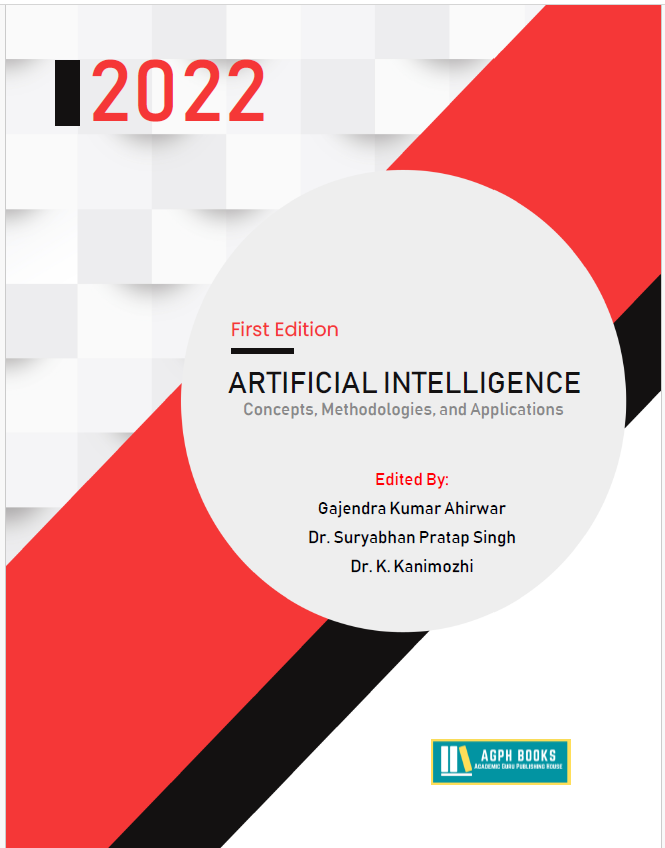Reinforcement Learning: A Review on The Decision Making Algorithm In Machine Learning
Keywords:
Reinforcement Learning (RL), machine learning methods, decision making, neural networksAbstract
“Reinforcement Learning” (RL) is basically the science dealing with the decision making. It is about learning the appropriate response in an environment to gain maximum feedback. This optimum behavior is acquired by interactions with environment as well as observations of how it reacts, comparable to babies exploring the realm around them then learning the behaviors that assist them reach a goal. In many application instances, adopting standard machine learning algorithms will sufficient. Purely algorithmic approaches without requiring machine learning tend to be beneficial in commercial data processing or maintaining databases. When a computer needs to deal with the unstructured or unsorted data, or with multiple sorts of data, the neural networks may be quite effective. In the case of the deep reinforcement learning, a neural network is the in charge of storing experiences thereby improving the way the job is completed.
References
[1] Botvinick, M., Ritter, S., Wang, J. X., Kurth-Nelson, Z., Blundell, C., & Hassabis, D. (2019). Reinforcement Learning, Fast and Slow. Trends in Cognitive Sciences, 23(5), 408-422. https://doi.org/10.1016/j.tics.2019.02.006
[2] Botvinick, M., Wang, J. X., Dabney, W., Miller, K. J., & Kurth-Nelson, Z. (2020). Deep Reinforcement Learning and Its Neuroscientific Implications. Neuron, 107(4), 603-616. https://doi.org/10.1016/j.neuron.2020.06.014
[3] Bueno, J., Maktoobi, S., Froehly, L., Fischer, I., Jacquot, M., Larger, L., & Brunner, D. (2018). Reinforcement learning in a large-scale photonic recurrent neural network. Optica, 5(6), 756. https://doi.org/10.1364/OPTICA.5.000756
[4] Cui, R., Yang, C., Li, Y., & Sharma, S. (2017). Adaptive Neural Network Control of AUVs with Control Input Nonlinearities Using Reinforcement Learning. IEEE Transactions on Systems, Man, and Cybernetics: Systems, 47(6), 1019-1029. https://doi.org/10.1109/TSMC.2016.2645699
[5] Elfwing, S., Uchibe, E., & Doya, K. (2018). Sigmoid-weighted linear units for neural network function approximation in reinforcement learning. Neural Networks, 107, 3-11. https://doi.org/10.1016/j.neunet.2017.12.012
[6] Fösel, T., Tighineanu, P., Weiss, T., & Marquardt, F. (2018). Reinforcement Learning with Neural Networks for Quantum Feedback. Physical Review X, 8(3), 31084. https://doi.org/10.1103/PhysRevX.8.031084
[7] Fuchs, A., Heider, Y., Wang, K., Sun, W. C., & Kaliske, M. (2021). DNN2: A hyper-parameter reinforcement learning game for self-design of neural network based elasto-plastic constitutive descriptions. Computers and Structures, 249, 106505. https://doi.org/10.1016/j.compstruc.2021.106505
[8] Ma, Y., Arshad, S., Muniraju, S., Torkildson, E., Rantala, E., Doppler, K., & Zhou, G. (2021). Location- and Person-Independent Activity Recognition with WiFi, Deep Neural Networks, and Reinforcement Learning. ACM Transactions on Internet of Things, 2(1), 1-25. https://doi.org/10.1145/3424739
[9] Nagabandi, A., Kahn, G., Fearing, R. S., & Levine, S. (2018). Neural Network Dynamics for Model-Based Deep Reinforcement Learning with Model-Free Fine-Tuning. Proceedings - IEEE International Conference on Robotics and Automation, 7579-7586. https://doi.org/10.1109/ICRA.2018.8463189
[10] Peng, G., Chen, C. L. P., Yang, C., & Member, S. (2021). Control of Robot - Environment Interaction Using Reinforcement Learning. 1-11.
[11] Perrusquía, A., & Yu, W. (2021). Identification and optimal control of nonlinear systems using recurrent neural networks and reinforcement learning: An overview. Neurocomputing, 438, 145-154. https://doi.org/10.1016/j.neucom.2021.01.096
[12] Staroverov, A., Yudin, D. A., Belkin, I., Adeshkin, V., Solomentsev, Y. K., & Panov, A. I. (2020). Real-time object navigation with deep neural networks and hierarchical reinforcement learning. IEEE Access, 8, 195608-195621. https://doi.org/10.1109/ACCESS.2020.3034524




